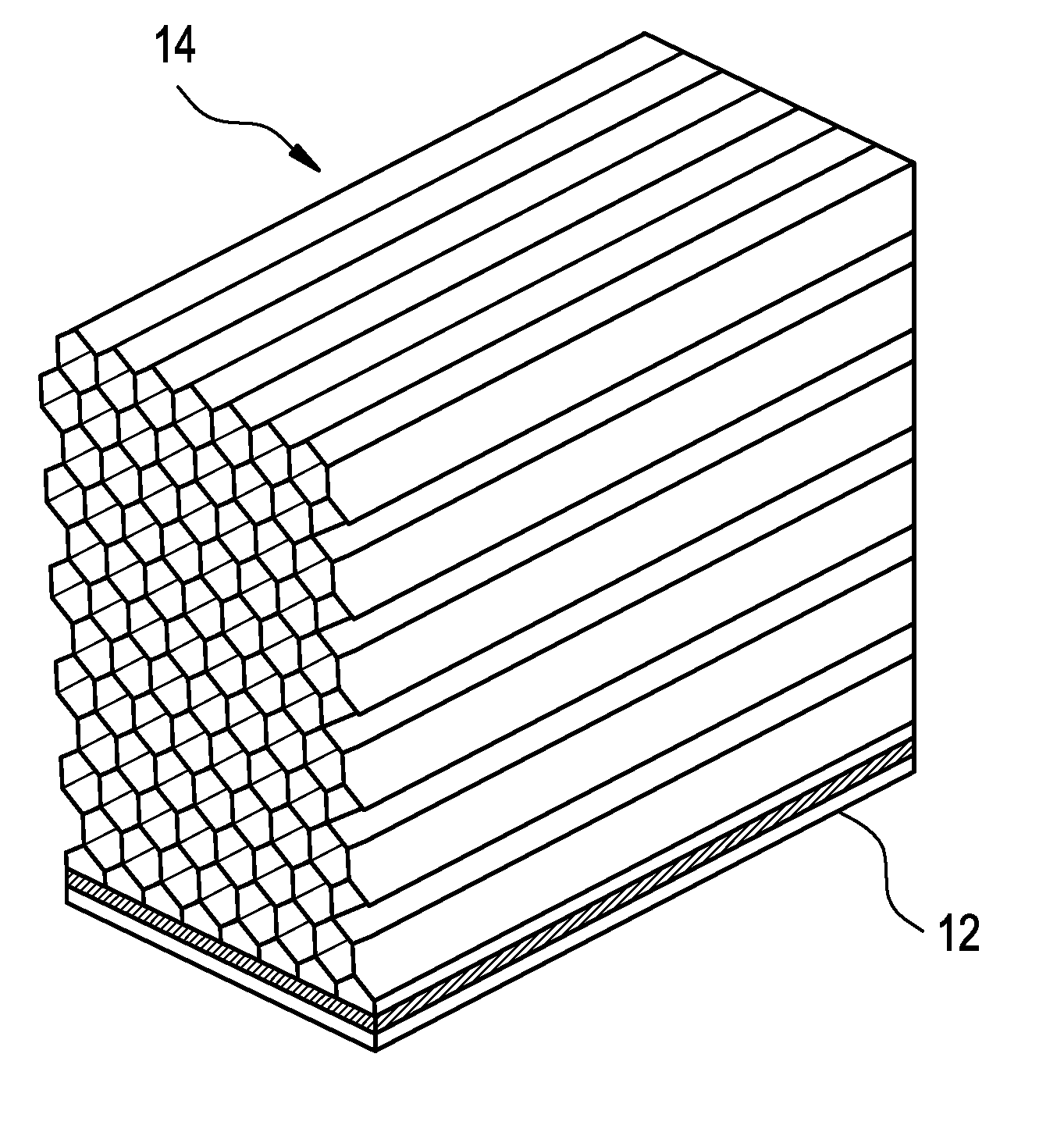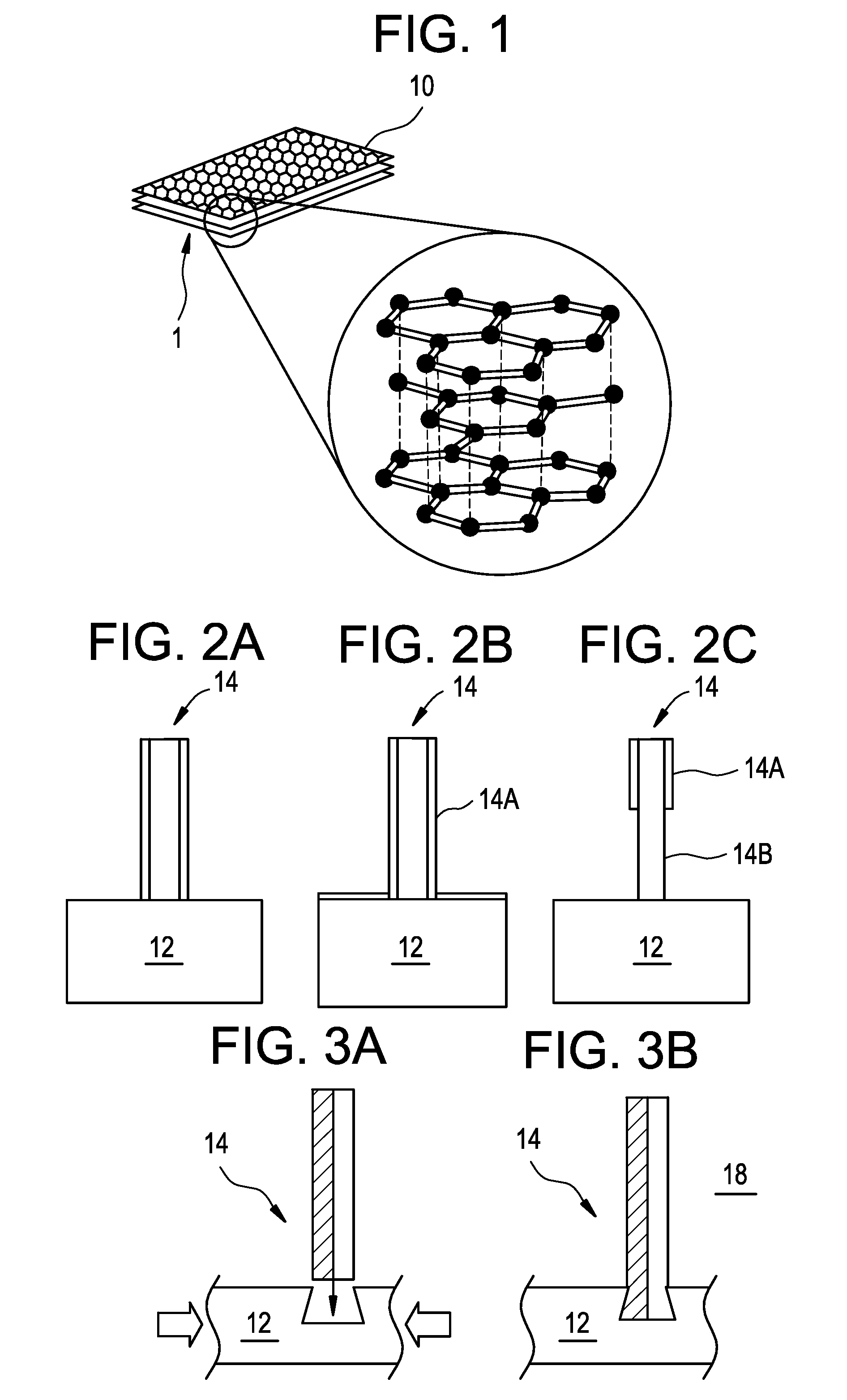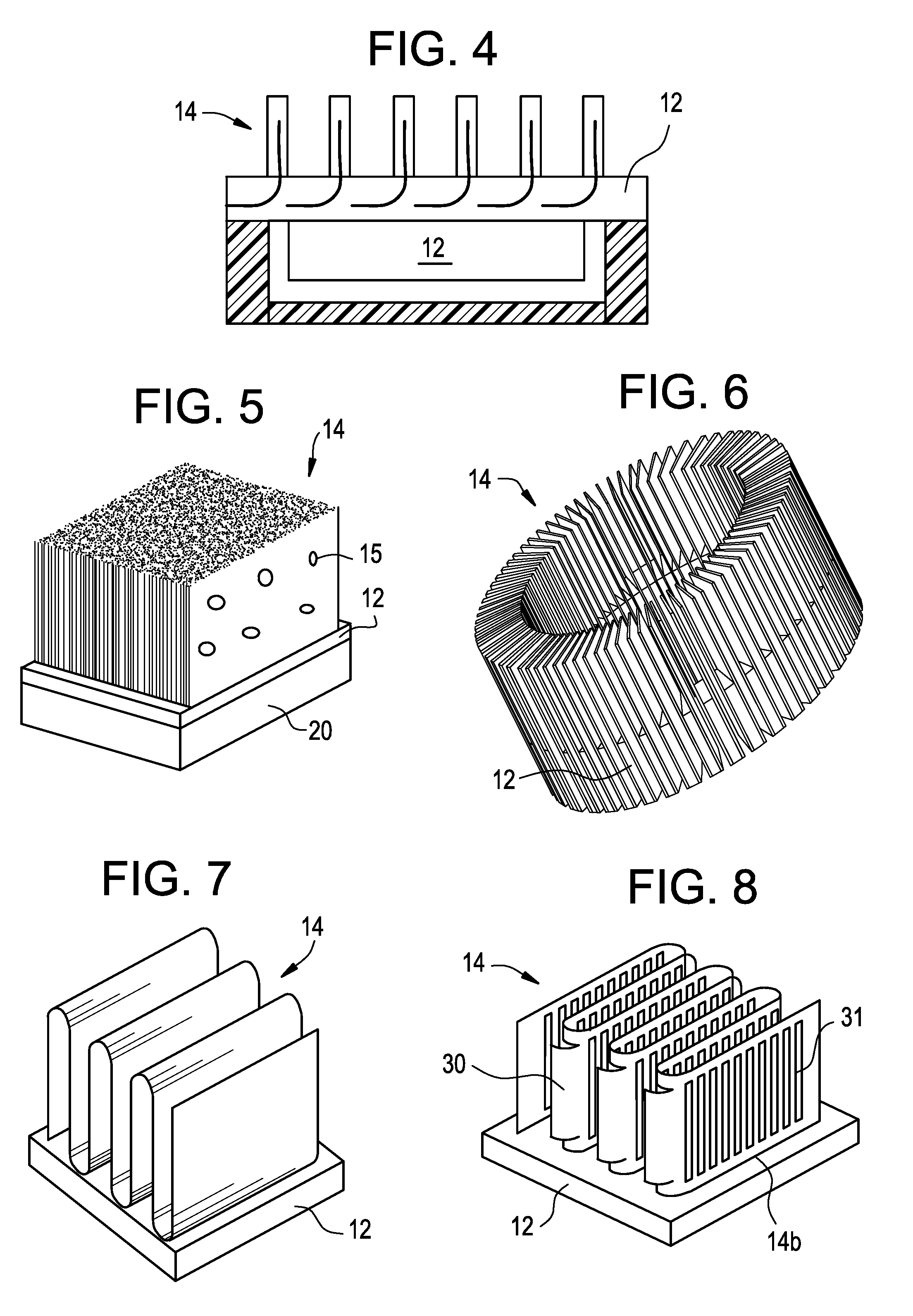Advanced heat sinks and thermal spreaders
a heat sink and spreader technology, applied in the direction of lighting, heating apparatus, instruments, etc., can solve the problems of increasing weight, increasing cost, and poor heat transfer rate from heat source surfaces to surrounding air
- Summary
- Abstract
- Description
- Claims
- Application Information
AI Technical Summary
Benefits of technology
Problems solved by technology
Method used
Image
Examples
example 1
[0085] A thermal pyrolytic graphite (TPG) sheet commercially available from General Electric Company is secured against a fat surface. A metal foil backed with a highly conductive adhesive tape, die cut to slightly overlap the TPG sheet, is pressed against the TPG Sheet. Metal foil tapes are commercially available from sources including Chomerics as CHO-FOIL® or CHO-FOIL® EMI shielding tapes. The metal foil sheet is peeled off, inducing the cleaving of the top graphene layer(s) from the pyrolytic graphite surface, and for the cleaving to be affixed to the adhesive backing of the metal foil tape. After the top cleaving is cleaved off, the process is repeated to obtain the next graphite cleaving.
example 2
[0086] The bare (not laminated) graphite layer surfaces of the metal-foil backed graphite strips in Example 1 are brushed with Parylene C using a small paint brush for thickness of 0.10, 0.25, 0.50, 0.75 and 1.00 mil (thousandth of an inch). The results show that as the thickness of Parylene increases, the mechanical robustness of the ultra-thin heat sink of the invention increases with the gain in robustness falling off at about 0.50 mil.
example 3
[0087] A two part, silver load, B-staged adhesive system is applied onto the bare graphite layer surface of the metal-foil backed strips obtained in Example. The resulting thermal conductivity of the heat sink is at least 75% of an uncoated TPG product.
PUM
| Property | Measurement | Unit |
|---|---|---|
| Thickness | aaaaa | aaaaa |
| Thickness | aaaaa | aaaaa |
| Thickness | aaaaa | aaaaa |
Abstract
Description
Claims
Application Information
 Login to View More
Login to View More - R&D
- Intellectual Property
- Life Sciences
- Materials
- Tech Scout
- Unparalleled Data Quality
- Higher Quality Content
- 60% Fewer Hallucinations
Browse by: Latest US Patents, China's latest patents, Technical Efficacy Thesaurus, Application Domain, Technology Topic, Popular Technical Reports.
© 2025 PatSnap. All rights reserved.Legal|Privacy policy|Modern Slavery Act Transparency Statement|Sitemap|About US| Contact US: help@patsnap.com



